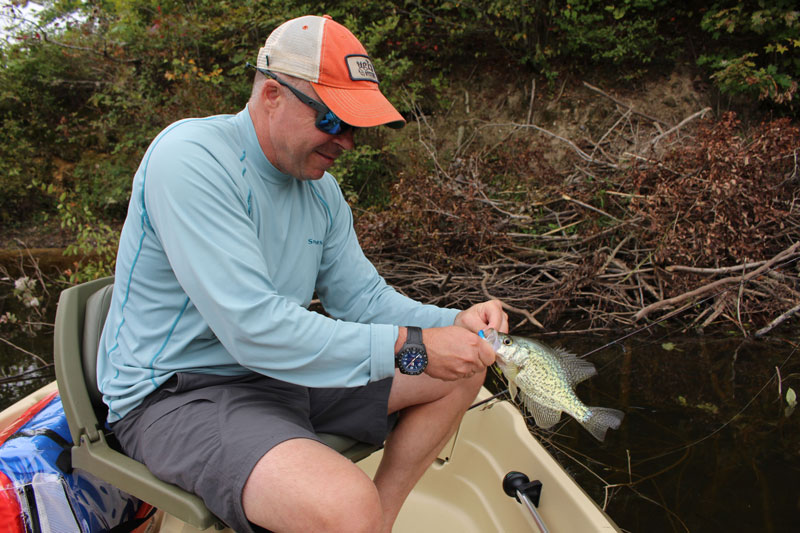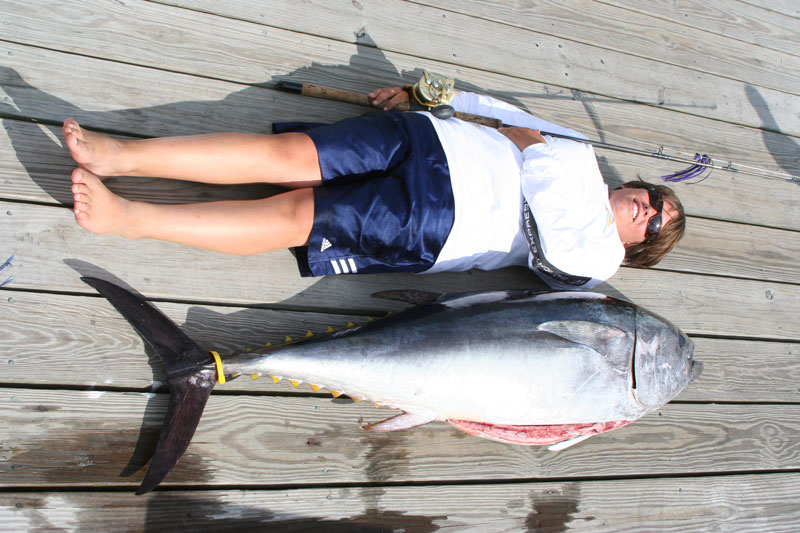When it comes to fighting fish, gear size is relative. Sure, you can feel 10-inch white perch tug against a 20-pound spinning rod as you crank it up, but crank it up is about all you’ll do. Engage in battle with the same exact fish when there’s a four-pound ultralight rig in your hands, and you’ll feel every kick of the fish’s tail, hear it take drag, and if you don’t play it right there’s a strong chance that perch will emerge victorious.

Why downsize and risk giving the fish an added advantage? Many anglers enjoy doing so simply because it adds a bit more thrill to the fight. But there are also times and places where the fish aren’t interested in large offerings and in order to present them with a lure or bait small enough to mimic the tiny items they’re feeding on, downsizing your gear is a must.
What is Ultralight Fishing Gear?
Ultralight gear can be spinning or casting, spooled up with either monofilament or braid. The rod’s action and length can run the gamut, just so long as it’s properly matched to the weight class. Remember, the term “ultralight” is a relative one. That very same 20-pound gear which seemed so large for perch certainly constitutes ultralight gear if your target is tuna. Plus everyone has their own opinion, and there isn’t any dictionary definition. That said, any time you have a realistic chance at fighting fish which significantly outweigh your gear class, it’s reasonable to call it ultralight fishing. Most people would probably class ultralight gear as follows:
- Freshwater Fishing – Six-pound class or under.
- Chesapeake Bay/Atlantic Coast Panfish – Six-pound class or under.
- Chesapeake Bay/Atlantic Coast Midsized Sportfish – 12-pound class and under.
- Chesapeake Bay/Atlantic Coast Large Sportfish – 20-pound class and under.
- Offshore Gamefish – 20-pound class and under.
When to Use Ultralight Fishing Gear
Any time you want! That said, there are times when it’s more appropriate than others. The number-one reason to cast ultralight gear for most anglers will be when the targeted species is feeding on very small offerings which can’t be mimicked with heavier gear. Consider crappie fishing around deadfall or a beaver dam in a lake, for example. Quite often they’ll want rather microscopic offerings, such as a two-inch tube jig on a 1/16th of an ounce jighead. Using 10- or even eight-pound gear, you can’t cast that tiny little jig more than a few feet. You can’t feel the crappie’s subtle take, and you’ll have an impossible time trying to differentiate between a strike and your jig snagging a tree branch. Downsize to four- to six-pound test, however, and you can place the jig exactly where you want it and sense it every time a fish takes a swipe.
Using ultralight gear means breaking off more easily and being able to apply less pressure, so there’s a definite drawback to using it, especially when you hook into an unexpectedly large critter — you never know when a five-pound largemouth bass will beat those crappie to that little jig. And whenever you go into a battle under-gunned, it’ll take a serious application of skill to get the fish into your landing net.
Still, this isn’t the biggest potential drawback to using ultralight gear. A bigger issue is the possibility of over-stressing fish that will be released. Remember, as far as those fish know they’re fighting for their life, and if the fight goes on too long they may literally fight themselves to death. Extended fights can cause a buildup of lactic acid in the fish’s muscles, which may eventually cause blood acidification that can be fatal hours after you watch the fish swim away. For this reason, whenever you’re specifically catch-and-release fishing for species like over-slot red drum or trophy rockfish, using relatively heavy gear is a much better move.
How to Fish Ultralight Gear
The biggest difference between fishing with ultralight gear and using the heavier stuff is that you’ll need to play the fish differently. With reduced power in the rod and lines of low breaking strengths, muscling in the fish simply isn’t going to happen. You need to add some finesse to your fight and use the bend in your rod to constantly apply a carefully metered pressure.

Similarly, setting your drag properly becomes critical. It’s always important to set your drags properly but in the case of ultralight gear, particularly freshwater and panfish-sized gear, the importance is magnified because it’s so easy to snap lighter lines like four- or six-pound test. If your drag isn’t set right (and of a smooth, high-quality nature in the first place) even a one-pound fish could break you off. Similarly, a botched knot or failing to spot chaffing on the line will likely result in a breakoff in short order.
Another thing you need to pay additional attention to with the tiny ultralight rigs is how much line is on your spool. If you lose 20 yards of line on a big 4500 series reel it’s more or less irrelevant. But on a tiny 1000 series reel that could represent 20 percent of your line capacity. With that much line missing your spool diameter will shrink appreciably, and your casting distance will take a big hit.
Finally, you’ll do your best with ultralight gear when you use lures, rigs, and baits that match up with it. Let’s say you’re fishing for bluegills with micro-jigs on a four-pound outfit, and you see a big bass hiding in the shadow of a log. You might be tempted to tie on a big spinnerbait to get its attention, but even a half-ounce lure can overwhelm that tiny ultralight rig. It will be easy to over-cast, and if you stop it in mid-flight the weight of the lure alone may well snap the line. Or, if it hits the water and you begin reeling the rod will be doubled over. Then if the bass actually hits, with little or no more bend available in the rod to absorb some of the jolt, there’s a good chance of a breakoff.
You’ll have a better chance of landing the bass if you try to tease it into biting with that micro-jig in the first place, but before doing so this is a case where you should ask yourself if a long, drawn-out battle could harm the fish. And the answer is probably yes. A much better move is to carry a larger rod and reel with you even when you plan to fish ultralight, so you have some heavier firepower close at hand.
Of course, this means you probably need to rush right out and buy some more fishing rods to be sure you always have all these bases covered. No, we don’t want to hear about budgets, or how much fishing gear you already have — get your priorities straight and go buy those rods and reels. The next time a fish strikes you want to emerge victorious, don’t you?